I’ve been using CMF’s latest phone for a month now, and I have a lot to say about this device. This is my in-depth, no-nonsense review of this budget beast. Is this the best phone under ₹20,000? Read on to find out.

This is a loaner review unit sent to me by Nothing India as a part of the Nothing Community Review Program. Big thanks to them for this opportunity!
BOX CONTENTS
The box is thick again! Besides the phone, you can find a transparent silicon case as well, which offers good protection right out of the box. Note that it does yellow over time, and is rather hard to remove after putting on.
But it doesn’t end there. Indian consumers are up for a treat because the CMF Phone 2 Pro will feature a 33W CMF Charger in the box, exclusively in India!
And finally, you get a SIM ejector tool. And this has to be one of the best sim ejector tools in the world. It’s an orange one with CMF inspired design. Nothing Phones certainly have the best SIM ejector tools. And not only are the looks good on this one, but it is very practical too. You have a lot of real estate to hold it, and inserting it into eject SIM card feels very satisfying.
The 33W CMF charger is officially sold on Flipkart for ₹999, and the case can cost you about ₹299. So in essence, you’re getting ₹1300 worth of goods for free with a ₹18,999 phone; basically everything you need to be using this device for a good period of time.
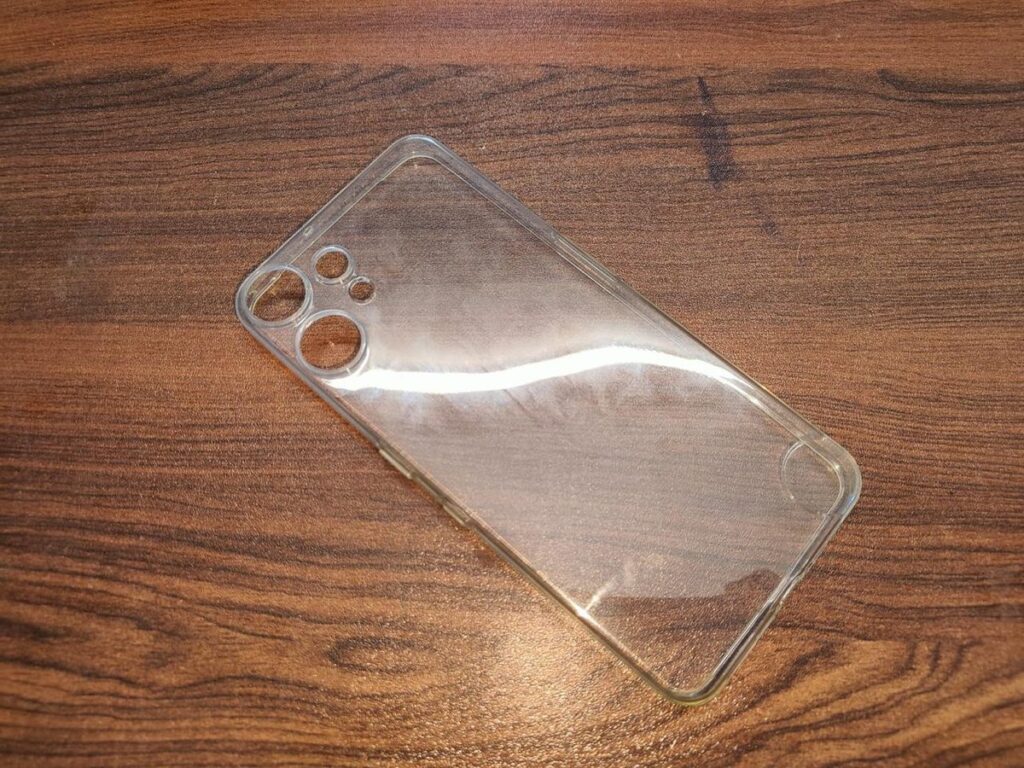
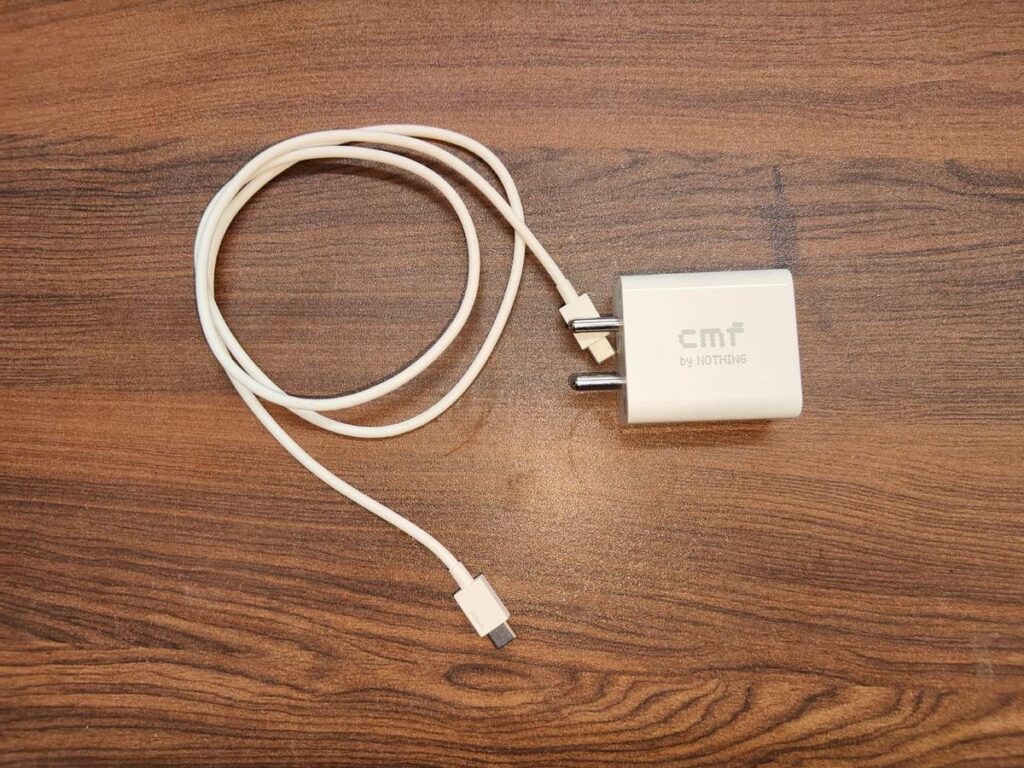
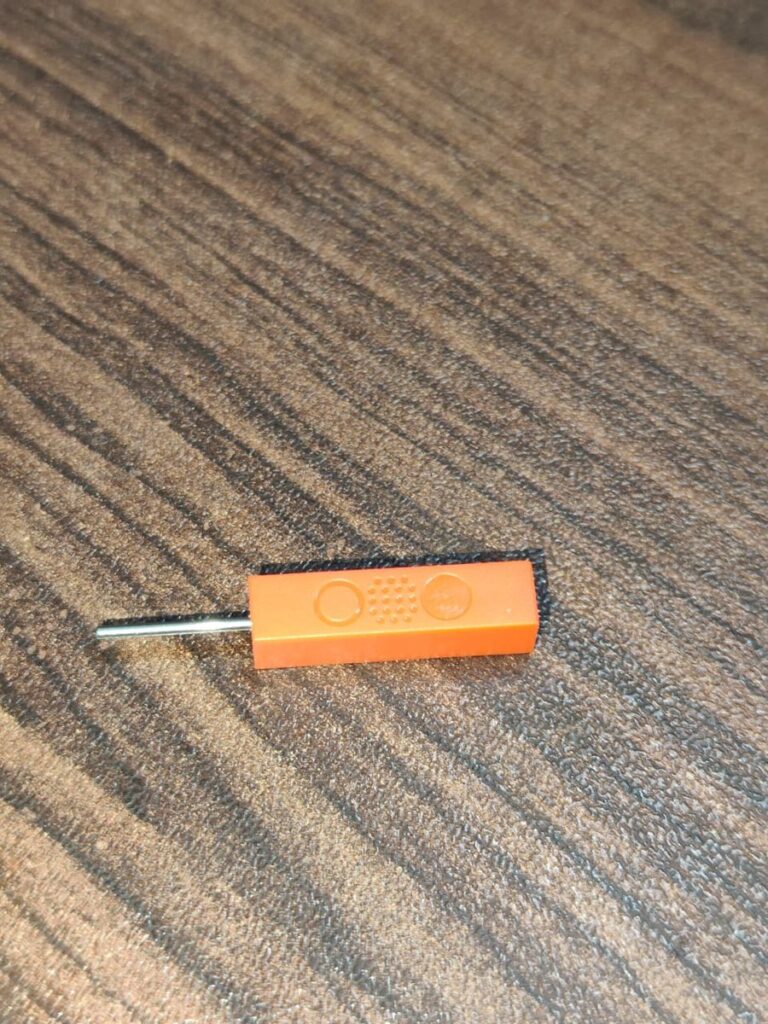
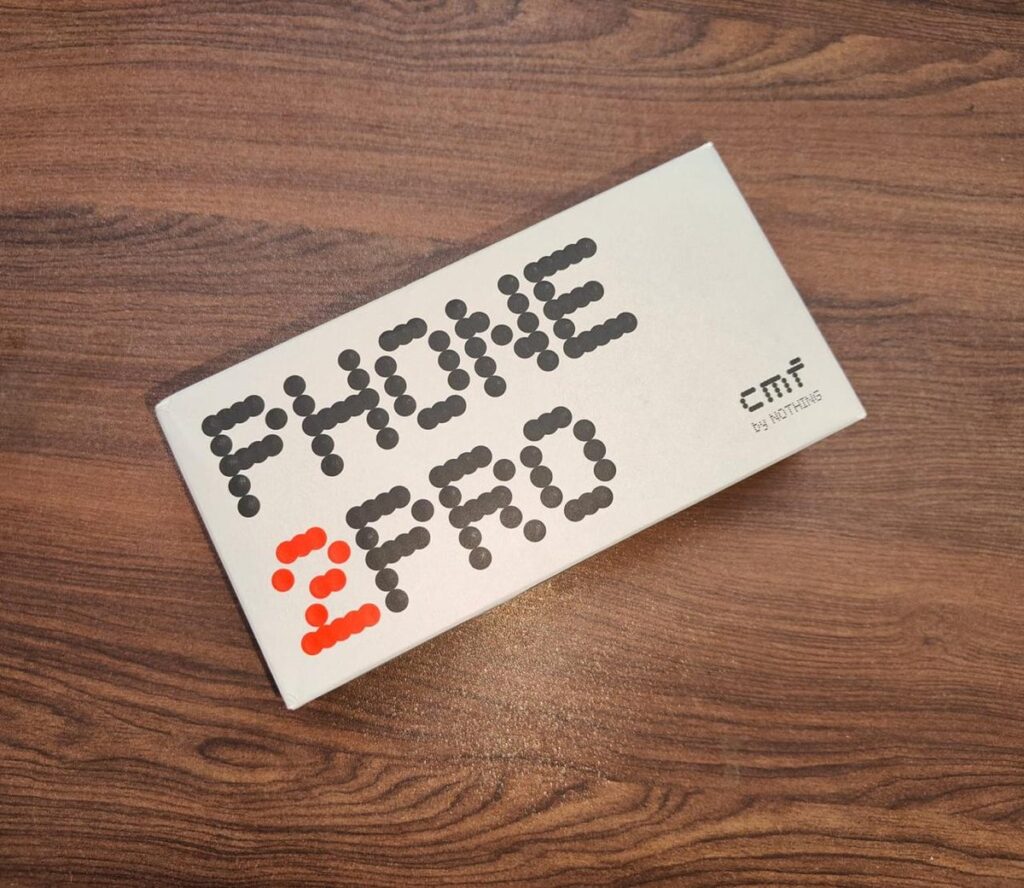
DESIGN
Easily one of the best aspects of this device. I love the way this phone has been designed.
The camera module looks very nice, with the main and ultrawide lens having an elegant aluminium ring surrounding them, and the telephoto lens is neatly merged with the flash.
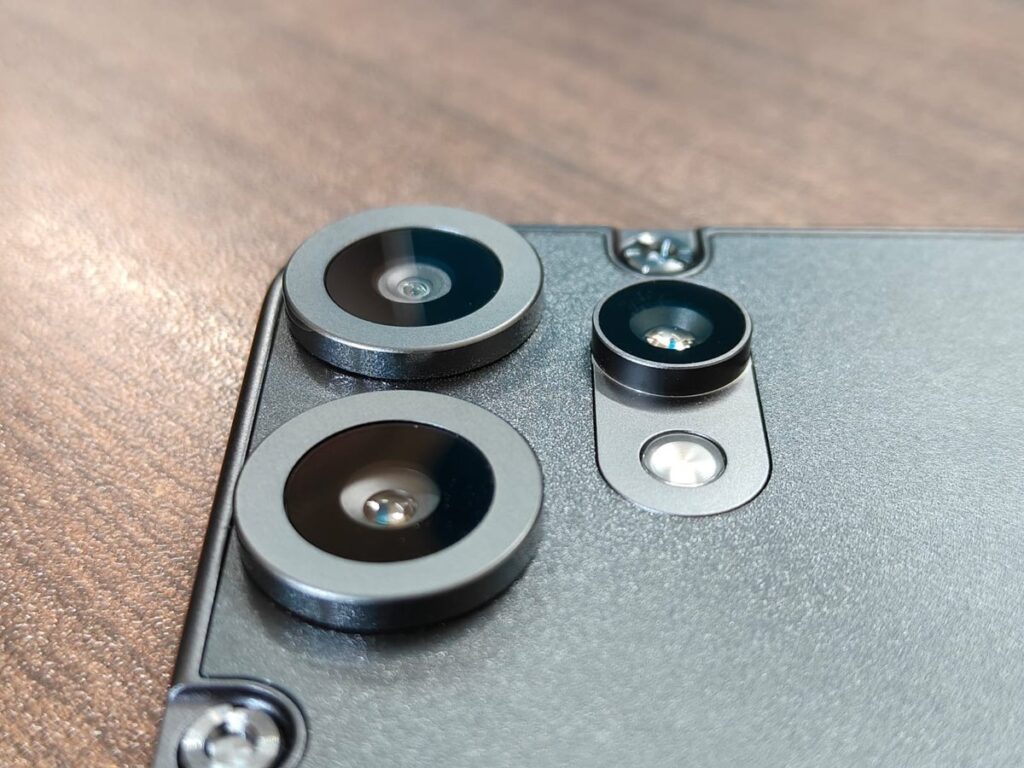
While the back panel this time cannot be changed, it itself is quite beautiful. When light is shone upon the back, it gives off a beautiful shimmer, representing frosted glass (with reference to the Black variant in particular).
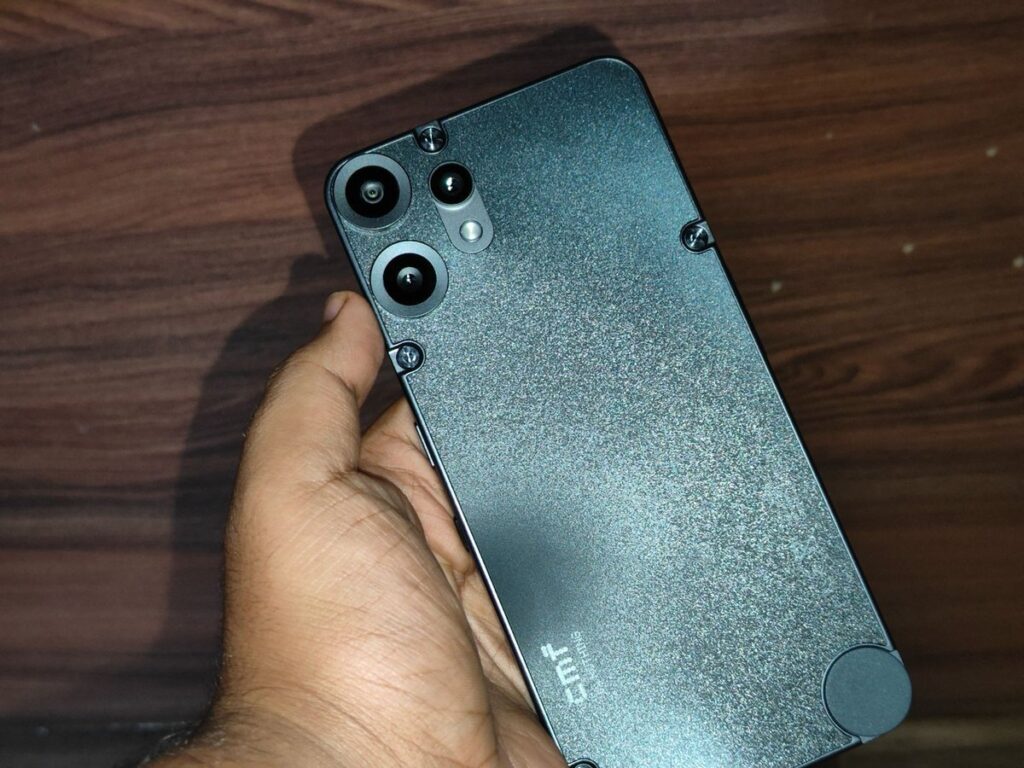
I am a big fan of this finishing.
The phone is extremely light-weight at just 185 grams, becoming Nothing’s lightest device. Holding this device does not ache my hand at all, and I find this particularly useful while taking images or shooting videos—it won’t tire you.
Apart from being lightweight, this device is pretty thin as well, at just 7.8mm, it becomes Nothing’s slimmest device as well.
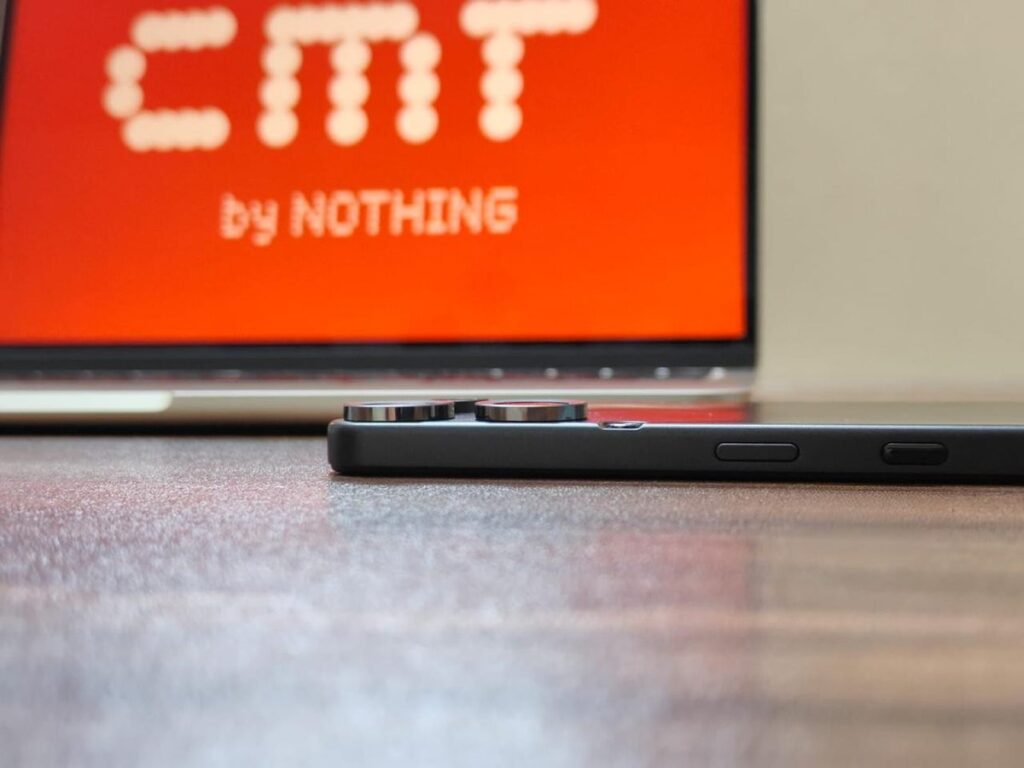
I have used the device without a case on multiple occasions when I’ve gone outside, and I must say, this device feels perfect without a case. It’s very lightweight, and thin. It feels nice to use this device caseless.
However, the smooth back does tend to be a tad bit slippery. But that won’t be a problem, because the frame is very grippy to hold.
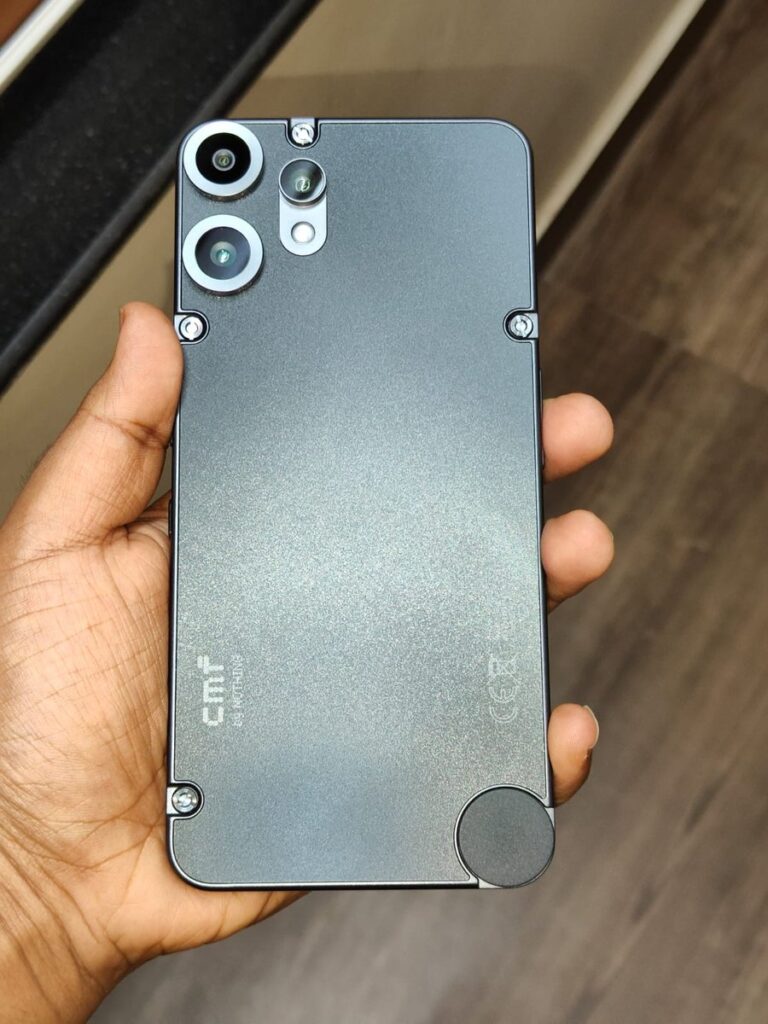
There is a rotating knob on the bottom right-side of this device, which is used for the lanyard accessory (which I have not tested). The knob is fused into the device, so it doesn’t protrude or affect the in-hand feel of the device.
At first, the knob will be closed tightly. I initially thought it couldn’t be rotated anymore, but after rotating it anti-clockwise with a tad bit of force, it began to rotate. Now if you keep on rotating the knob, it will eventually come off. (For the lanyard)
Speaking from experience, you have to be careful when you’re using this caseless, because the knob from my device fell through my shoulder while I was on a call. Thankfully, I caught it.
It’s actually fun to fidget with. You can keep on rotating it, much like a disc jockey, if boredom has caught you.
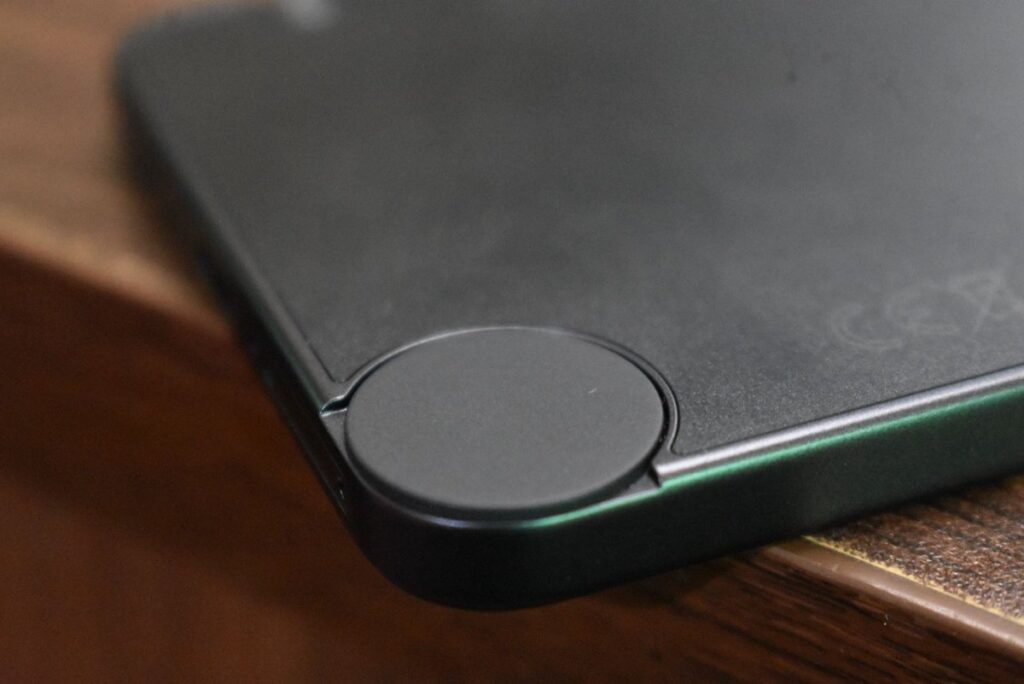
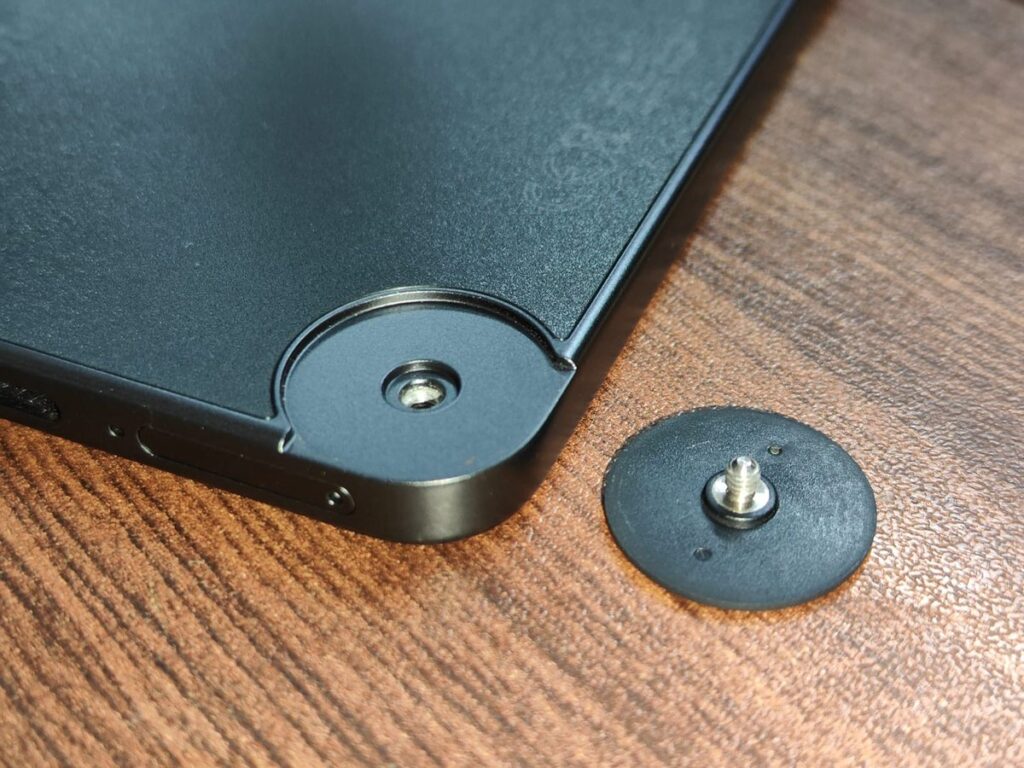
Four screws can also be noticed on the back, which definitely add some character to the phone.
The CMF branding is also very subtle. This overall results in the phone having a very minimal and aesthetic back.
One of the best designs you can find for this price.
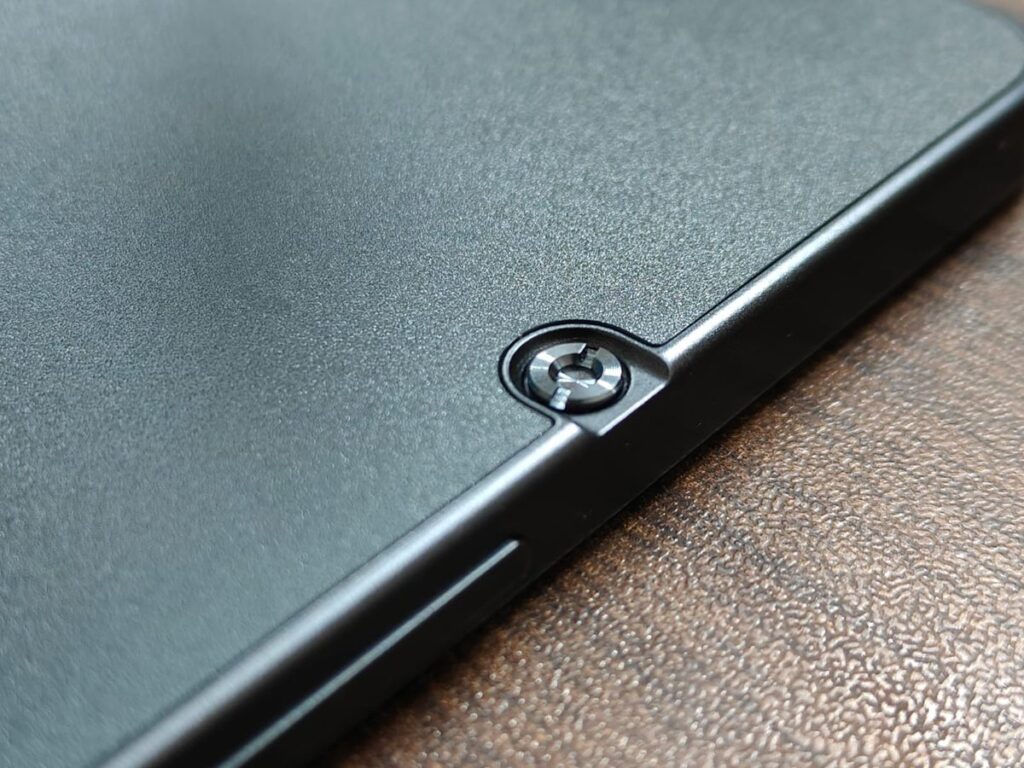

DISPLAY
The display is another positive point of this device. It features the exact same display as that of the Nothing Phone (3a), except the bezels being symmetrical and slightly thicker.
It’s a 6.77” 120Hz AMOLED LTPS display with Panda glass. It has a peak brightness of 3000 nits, meaning that the display can get pretty bright.
I have had no difficulties using the Phone 2 Pro under direct sunlight. The visibility of the device remains very good.
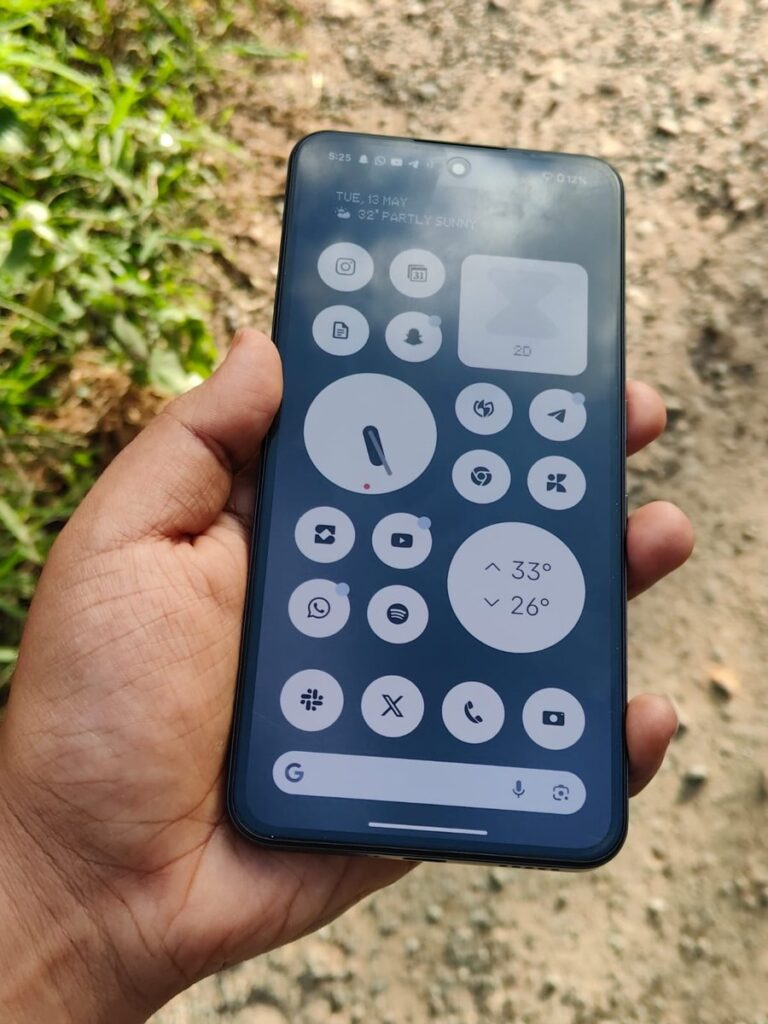
The size of the device feels just right in my hands. 6.7” is relatively large for a smartphone, but the bezels make the phone feel perfect.
The phone features PWM dimming at 2160Hz, which is extremely good. In addition to it, the phone automatically switches to DC dimming when used above 50% brightness.
This means that those sensitive to screen flicker wouldn’t feel much strain, especially at low brightness.
Note that these lines are not visible to the naked eye. This image was taken at a fast 1/4000s shutter speed, and hence it is visible. Yet, some users find it a bit difficult to use devices with low PWM frequency.
Image 1 showcases the PWM dimming below 50% of brightness.
Image 2 showcases DC dimming above 50% of brightness.
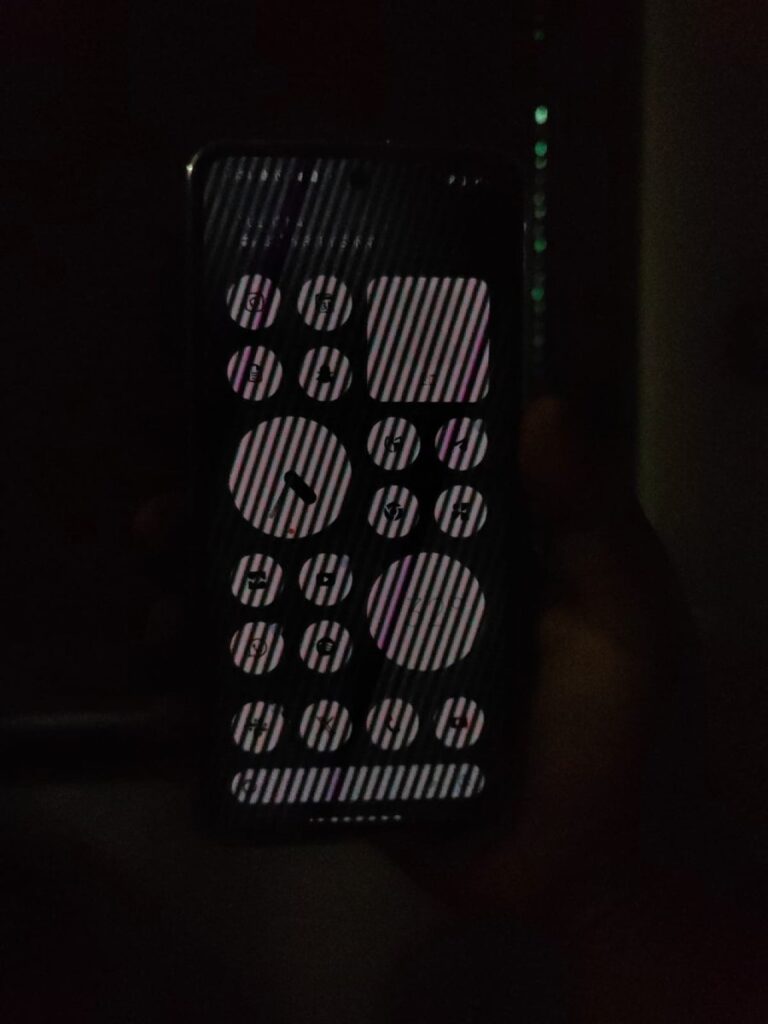
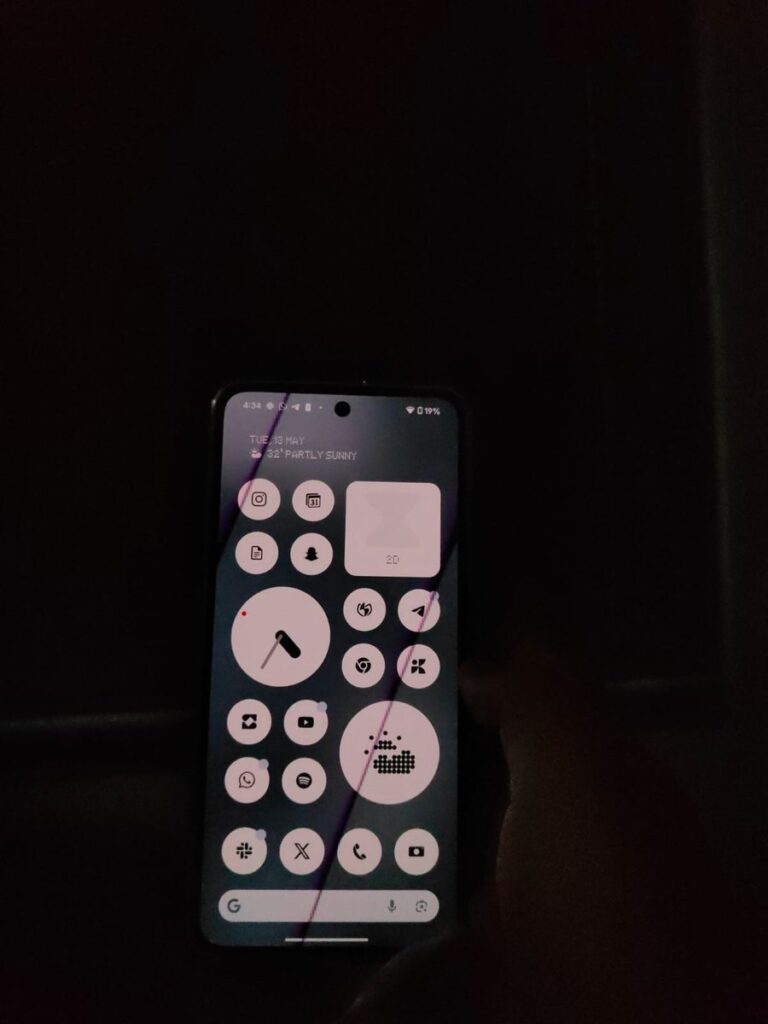
SPEAKER
This device features a single, bottom-firing mono speaker, which is not loud enough. Moreover, the sounds lack bass and depth. I don’t like this aspect of this device.
The performance of the speaker becomes a problem while using speakerphone during a call—it’s just not loud enough to hear the other party clearly.
To make up for this, the software offers a 150% volume booster, which slightly boosts the sound output. While this increases the sound, it does so with a lot of distortion, resulting in loss of audio quality.
You would be better off using headphones with this device. A plus-point is that this phone support LHDC, meaning LHDC supported bluetooth audio gear would offer good quality.
BATTERY
The battery, when it comes to backup, is extremely good. It has a 5000 mAh battery, and a full-charge can easily get you more than 6 hours of screen on time with 5G and location enabled.
The highest I’ve squeezed from a full-charge is 8 hours and 20 minutes. Moreover, it can last for a few good days with minimal usage. So it is solid at the SOT department.
While this device does not use a silicon carbon technology to make use of a bigger battery, the capacity is just fine.
However, when it comes to charging, it’s bad. The phone only supports 33W charging, which is relatively slow compared to the competition.
Now with the 33W charger that is included in the box, I have noted the following times in my testing:
20-60: 28 minutes
20-90: 49 minutes
20-100: 1 hour 5 minutes
0-96: 1 hour 18 minutes
0-99: 1 hour 40 minutes
Overall, it takes around 1 hour 30 minutes for a full charge, and it varies a lot.
I am so used to SUPERVOOC charging that I sometimes plug this device 10 minutes before going out, only to see that about 5% has increased. So with this device, you’ll have to plug it in a while before you’re going out.
But the good thing is that the battery will definitely last. As I said, hitting even 9 hours of screen on time is an easy feat with this device.
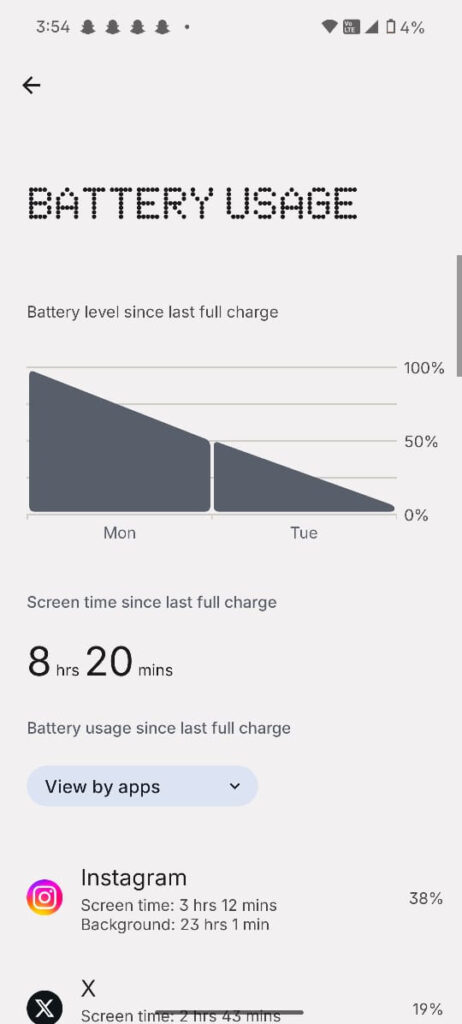
PERFORMANCE
Under the hood is a Dimensity 7300 Pro, which on paper, offers decent performance. The storage type is, of course, UFS 2.2, which has been optimised very well.
My day-to-day usage has been fine. The device performs well when it comes to using social media, taking pictures, and playing games. If those are the main demands for a person, then this device is an excellent choice.
For gaming, I’ve tested BGMI, which does fine. The phone does support 120 FPS in BGMI, which is temporarily removed right now, but will be restored with the game’s 3.8.0 update. I did test 120 FPS while it was available, and it performed well enough, except 120 FPS wasn’t consistent—it kept varying, dropping to 111 FPS, which was the lowest I experienced in my testing.
A 15 minute gameplay with smooth graphics and extreme frame rate (at a max of 62 FPS) drained 4% of the battery and heated the device to 36° C. So playing BGMI, and similar such games will be fine on the Phone 2 Pro.
ESSENTIAL SPACE
The CMF Phone 2 Pro inherits the same Essential Space feature from its close relatives at Nothing, which means it has an extra button on the right side of the device, just below the power button, known as the Essential Key.
For those who aren’t aware, Essential Space is a place where you can store your thoughts, ideas, and note down things that you want to remember. It’s very simple, all you have to do is press and hold the ‘Essential Key’ (which can be found below the power button) and speak into the mic what you want to remember. If you don’t want to speak to it, you can press the Essential Key once and you can type whatever you want.
For example, you could press and hold the Essential Key and tell it “Remember to water the plants tomorrow at 6 AM”, and it will make a reminder for you in the ‘Essential Space’ app.
To access the Essential Space, you have to double click the Essential Key. There, you can find all your entries, and your reminders.
It’s honestly a very useful thing, but it lacks a lot of important features. For instance, you cannot edit a ‘Memory’ after you’ve added it. So you won’t be able to fix any transcription errors that may take place. Moreover, there is no cloud platform to access your memories from, say, your computer. And also, there is no way to export these memories.
But if you ask me whether it’s a good idea, I’ll say yes. It’s certainly an innovative idea.
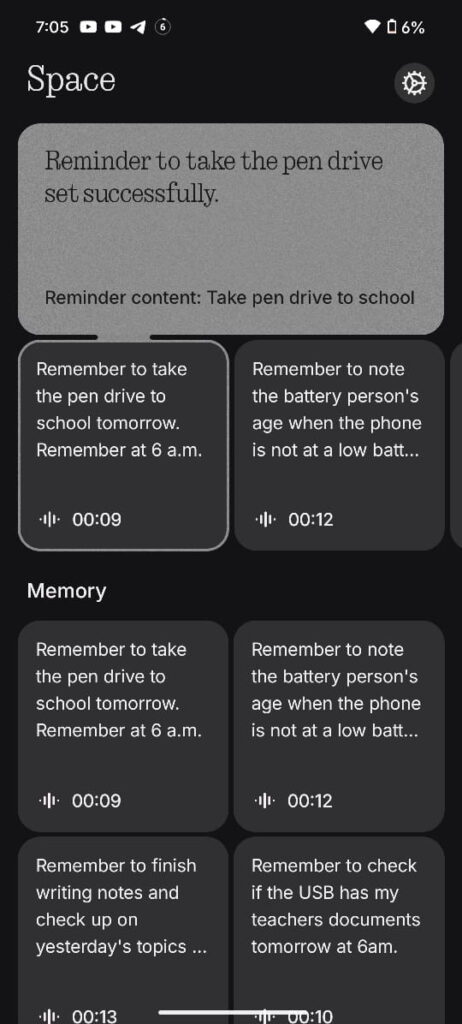
SOFTWARE
The software is phenomenal in this device. In a segment where almost every phone comes with some sort of bloatware, whether it be pre-installed games or ‘Hot Apps’, Nothing OS is clean from any bloatware.
Nothing OS, built on top of the Android Open Source Project (AOSP) offers users a clean interface with Nothing’s personal touch to it.
The software performance is phenomenal. Nothing OS has grown to be one of my favourite Android skins.
The animations, with the latest update, have become so much better. You can open and close apps in a similar way to Color OS/Oxygen OS.
A thing to applaud about Nothing OS is the way it utilises widgets. Widgets are a core part of every Nothing OS homescreen and they make it so that every inch of your homescreen is filled. The Nothing OS lockscreen also allows a lot of customisation.
If software is a priority for you, this phone is a strong candidate with its clean and intuitive software.
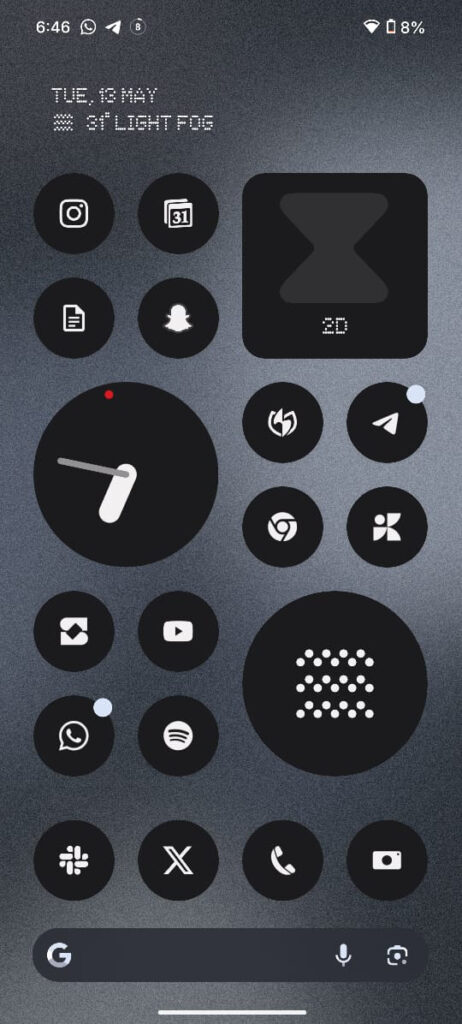

CAMERAS
Perhaps the highlight of this device. This device which costs less than ₹20,000 features a telephoto lens, when higher-end smartphones lack one.
The main lens is a 50 MP Samsung GN9.
The telephoto is a 50 MP OmniVision OV50D.
And the ultrawide lens is 8 MP.
One thing to note with the cameras is that you have the ability to use cube files, or LUTs (stands for lookup tables, and are basically a filter), which allow you to instantly color grade your images and change its vibe. It’s a very useful tool, and photography enthusiasts will absolutely love it.
Now coming to the main camera, it can take some very good shots. It has a minimum focusing distance of 10cm, and a con here is that it lacks OIS (Optical Image Stabilization).
[All images you’re going to see as samples are unedited, except the use of LUTs]
Regardless, it can take some good images. Here are a few:
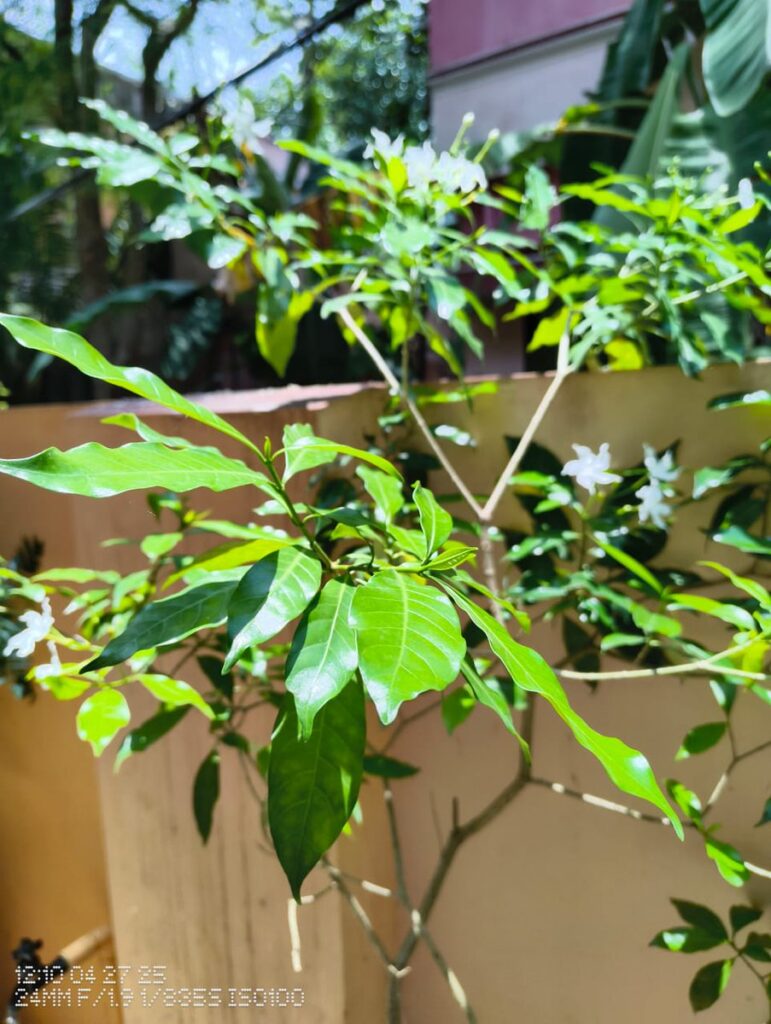
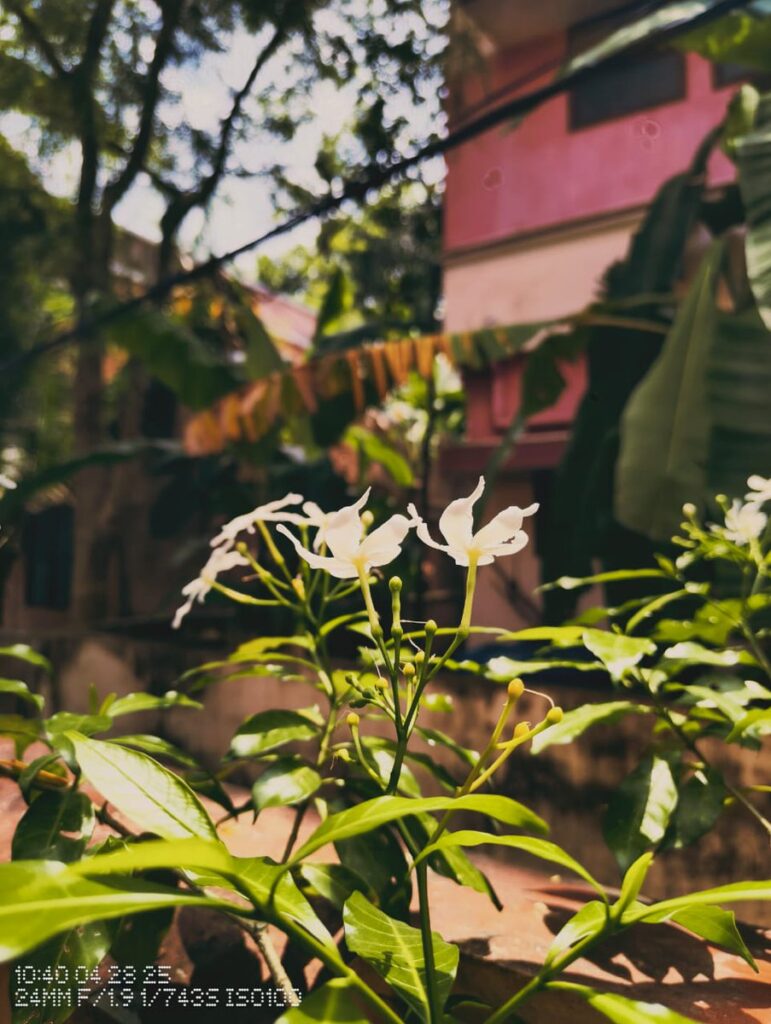
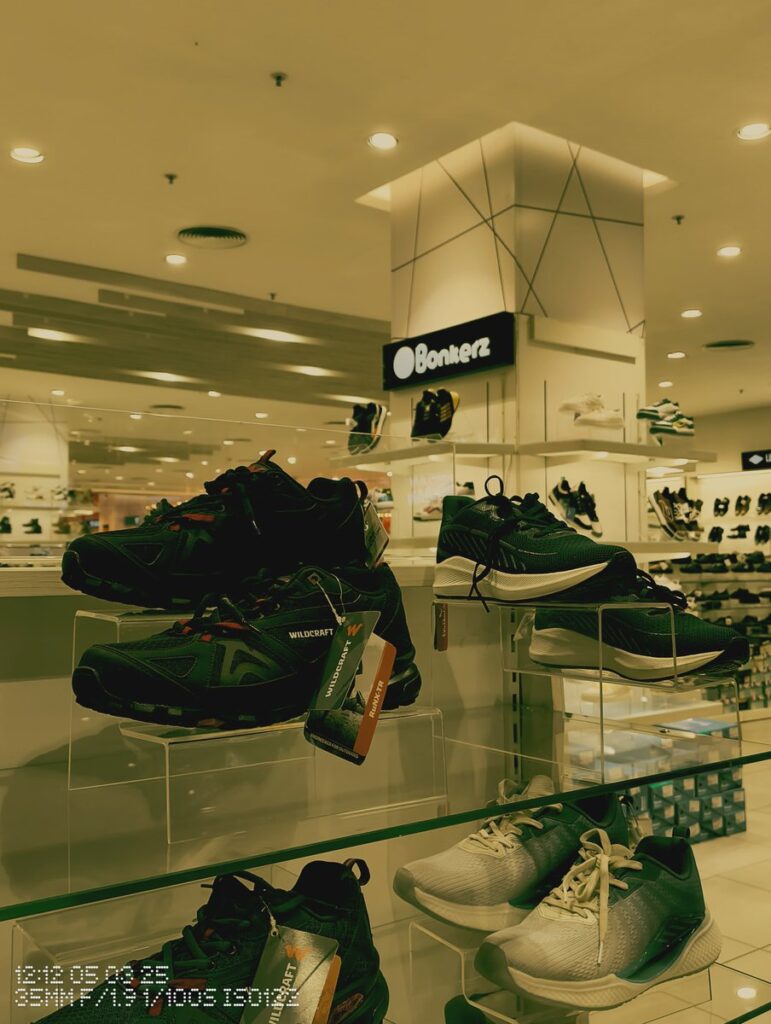

The telephoto lens is very addictive. The 50mm shooting range offers lots of possibilities, and this lens allows you to conquer all of them. I can guarantee you that you will be spending more time using the telephoto than the main lens!
It has a minimum focusing distance of 35cm (it is being worked on to be reduced to 25cm), and taking macros with it is rather hard. I have not been successful in taking telemacro shots because of the focusing distance.
The 2x telephoto does take decent 3x and 4x shots as well, and sometimes even 5x and 6x. It all depends on the scenario, and in most situations, it shines.
One thing to note is the lack of Optical Image Stabilisation (OIS), which means while zooming, your hands have to be very steady.
Here are some of my best shots:


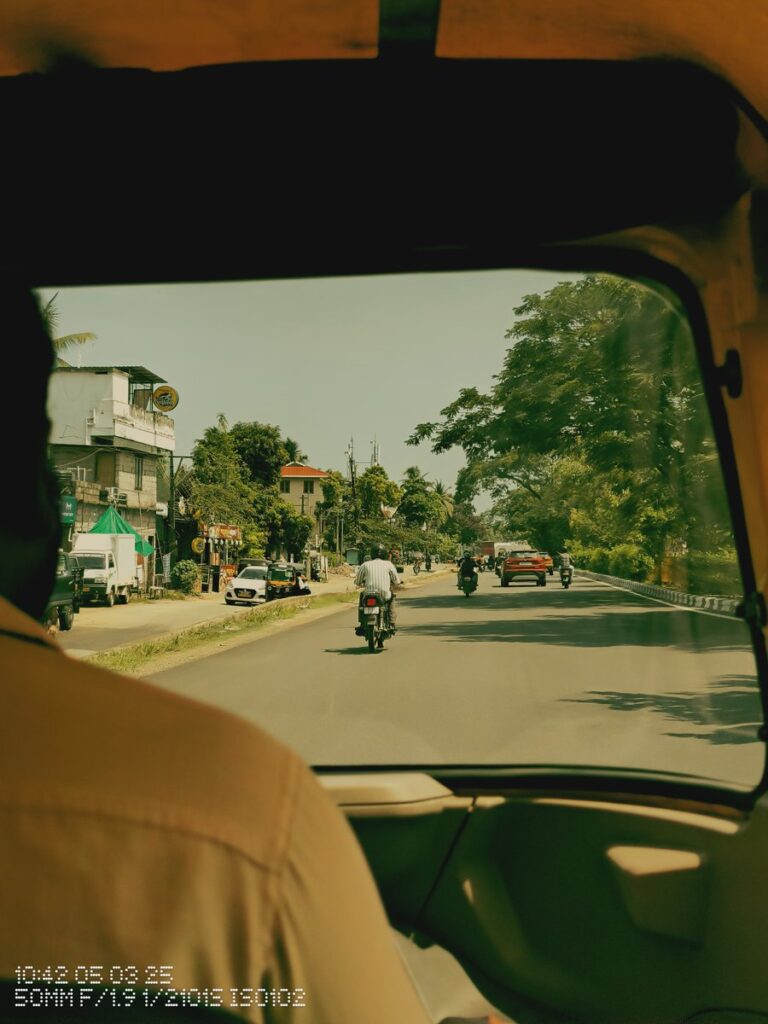
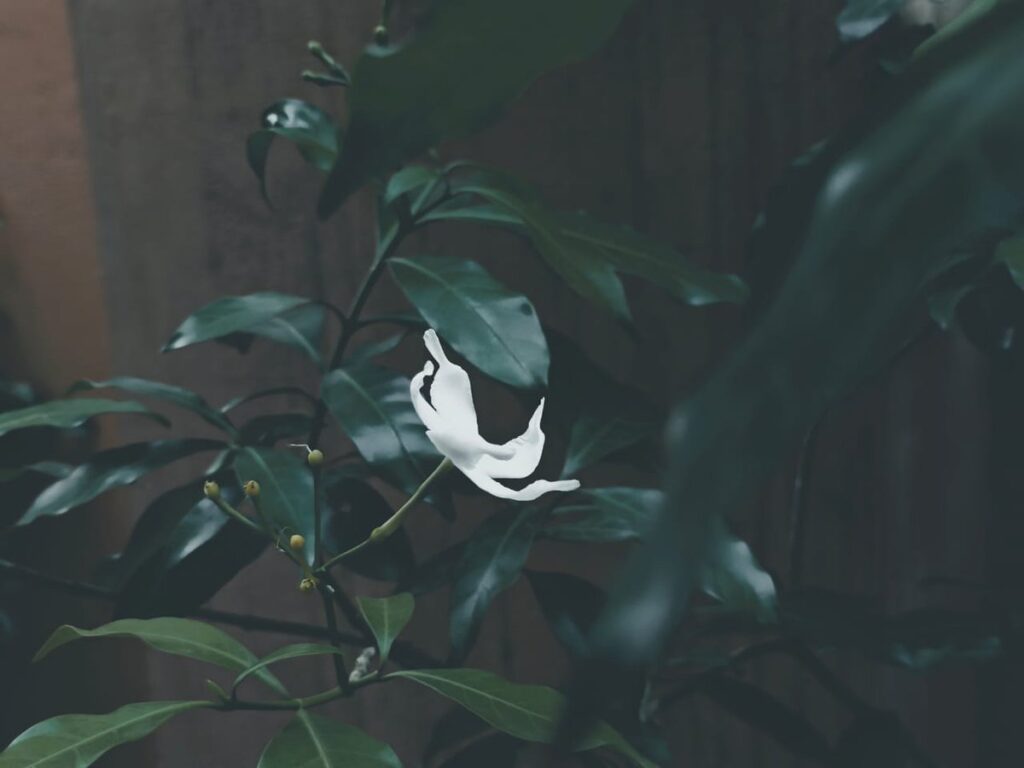
At 24mm or 1x, the phone uses the main lens. When you change it to 2x, it optical zooms into the 50mm range. And after that, it digital zooms all the way up to a limit of 20x.
A bug I’ve faced here is sometimes the main lens doesn’t switch to the telephoto, and instead it digital zooms. This is happening currently because the minimum focusing distance of the 2x telephoto is 35cm, and if any object is below that distance, the algorithm is triggered and the main lens is used. CMF’s team is working on the issue to reduce the minimum focusing distance to 25cm.
Nevertheless, here are some zoomed shots.
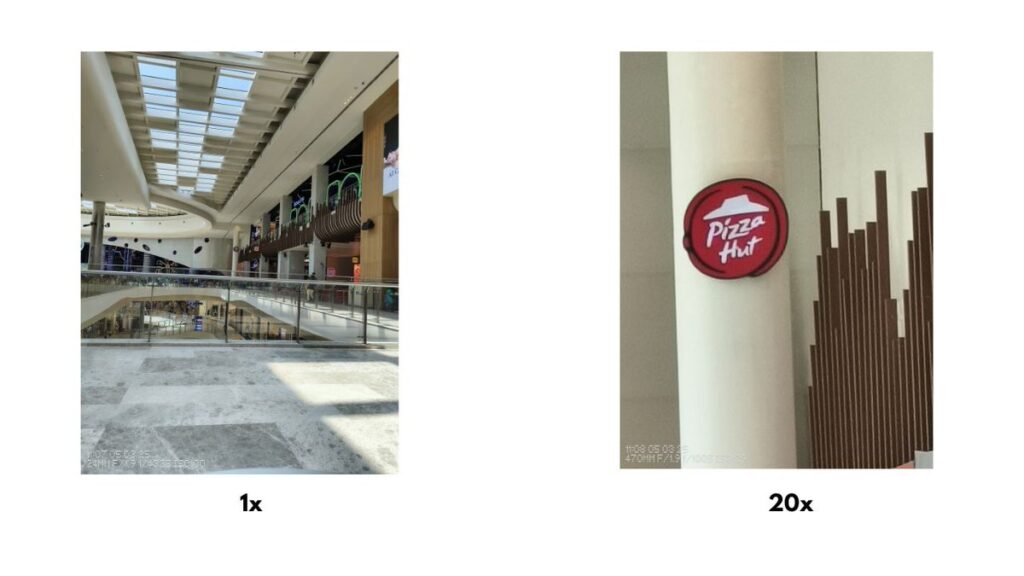
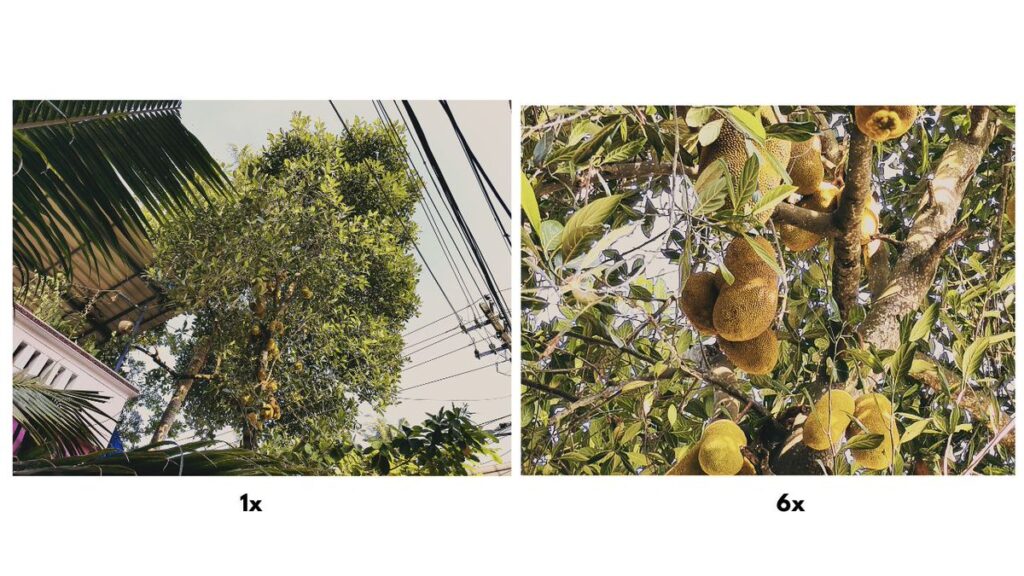
The ultrawide lens isn’t as good as its fellow lenses, but its 8 MP sensor gets the job done most of the time. It has a focusing distance of 90 cm with fixed focus, so taking macros with it is next to impossible, unless you have the macro lens attachment (not tested by me).
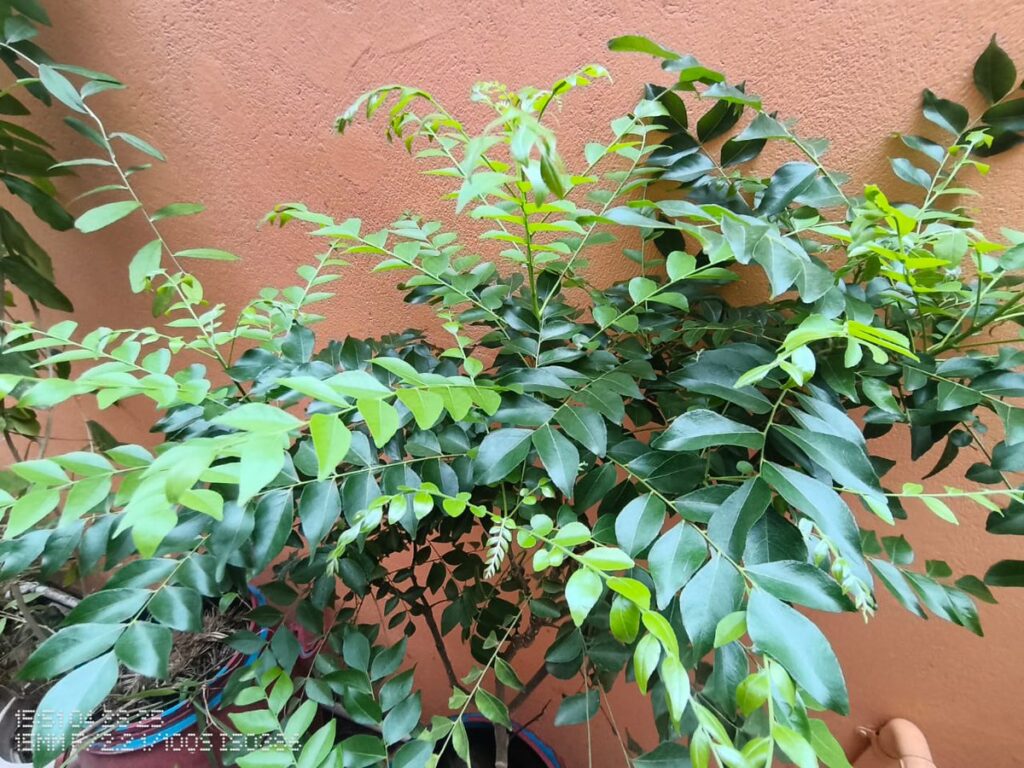
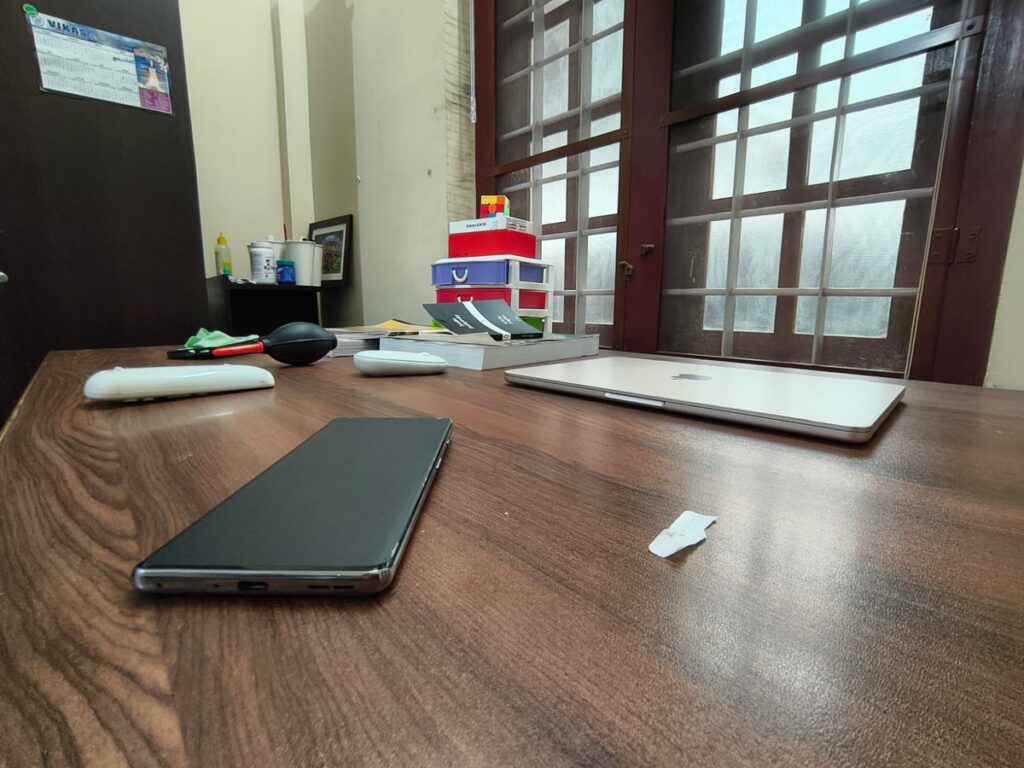


Night shots are passable. Sure, there is going to be a lot of noise, and blur too, but the pictures aren’t too bad for a phone in this price segment. I’ve noticed shots of close objects perform worse than shots of, say, architecture, in low-light conditions.

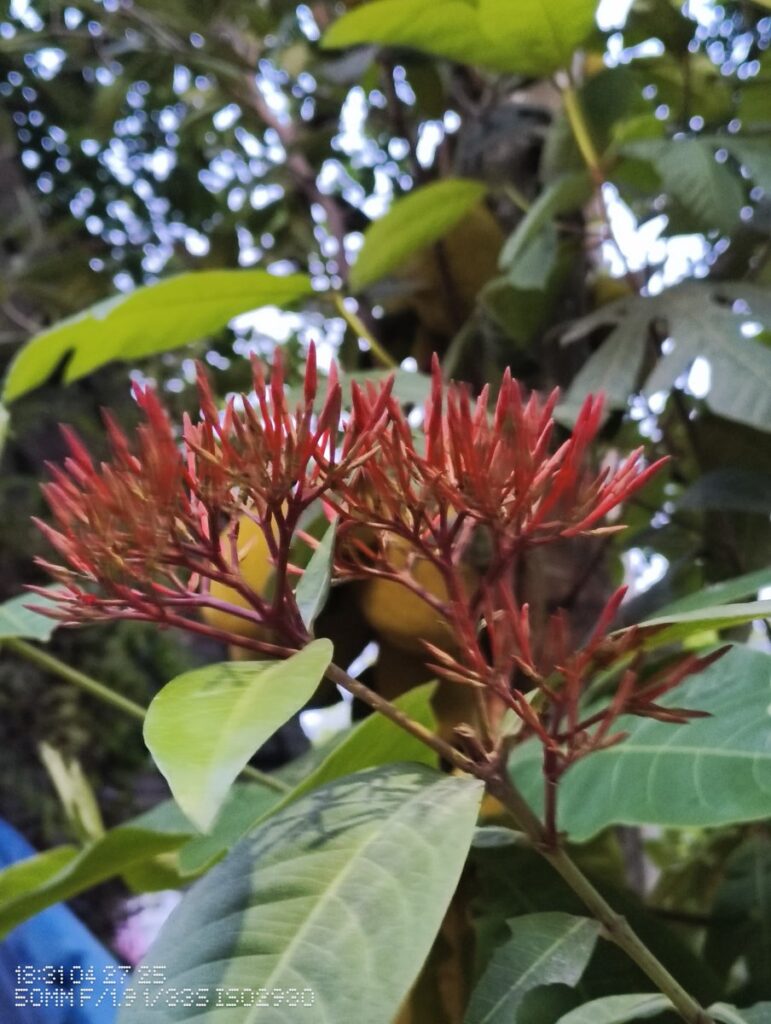
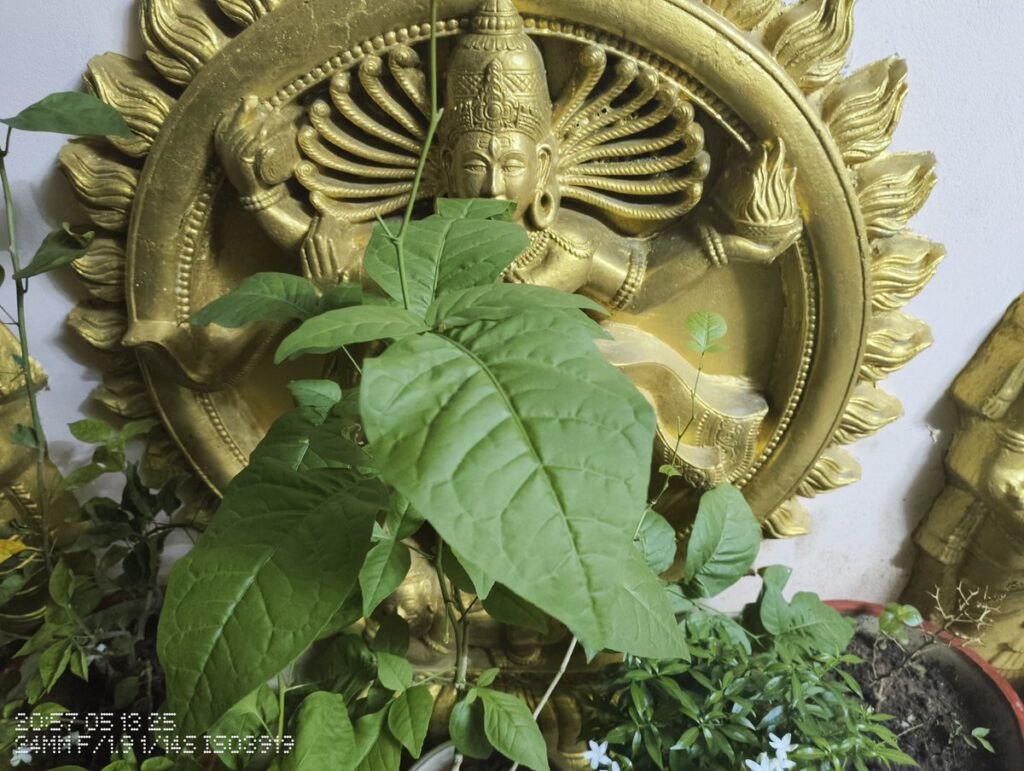
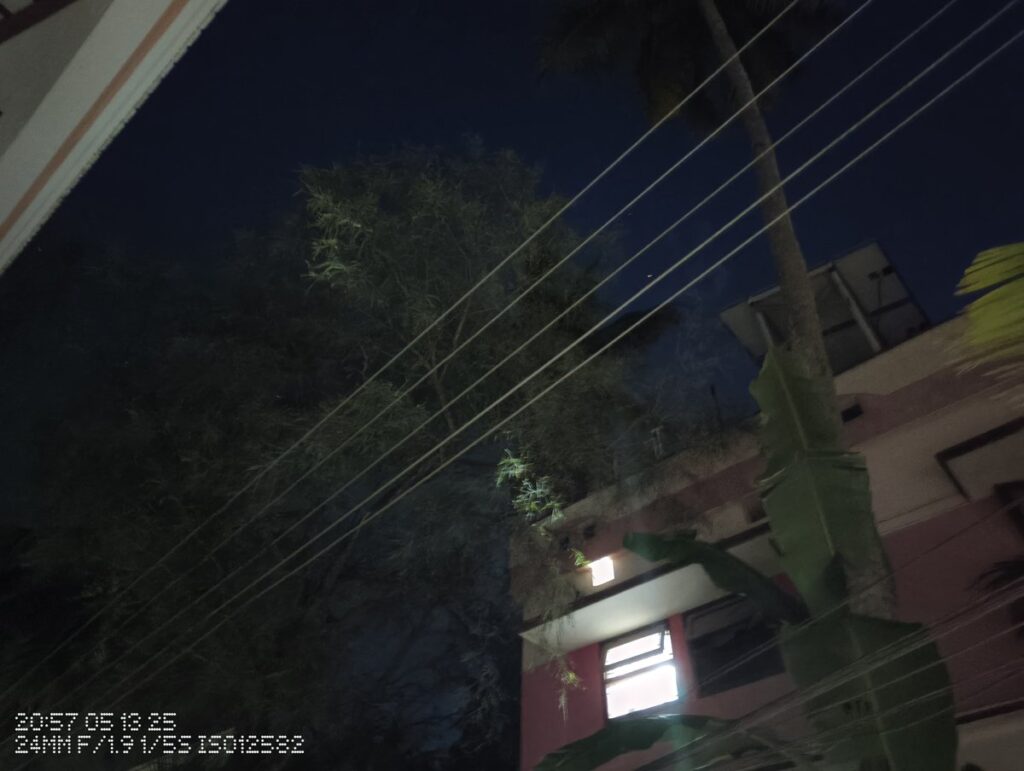
THE GOOD
The design and finishing is great
Battery life is exceptional
Cameras are good for the price
LUTs are game-changing
Display is good
The phone is very lightweight and thin
The software is phenomenal, has no bloatware
The in-hand feel is fantastic
Essential Space is an innovative idea
Unboxing experience is great, with a case and charger in the box (India only)
Expandable storage up to 2 TB
THE BAD
Bad speakers
Slow charging speeds
Hard to take macro shots
Lack of OIS on main and telephoto, so your hands must be very steady while zooming
No NFC, which means you will not be able to tap for payments
These are the things that I find as cons on this device.
FINAL VERDICT
After using this device for one month, I have a lot of clarity.
I will easily recommend this device to you if you prioritise cameras, software, battery backup, display and form factor, with casual gaming.
This device is not a gaming-centric device. But if you are a casual gamer with the aforementioned use-cases, then it is a great fit for you.
But then again, there’s an asterisk—the speaker. If you are someone who doesn’t like to use headphones and directly listens to music from the speaker, you will find playing music difficult.
So keeping the asterisk in mind, if you are someone who is looking for an all-round phone for under ₹20,000 with good cameras, software and a charger in the box, I’d say this has to be the one for you.